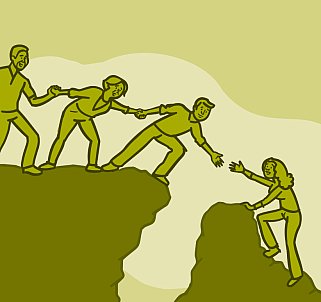Who Invented the Walkathon: Unraveling the Origins
The walkathon was invented by a group of Canadian nuns in 1968 to raise funds for cancer research. This event involves participants walking a designated distance for a cause.
Walkathons have since become popular fundraising events worldwide, promoting health and community engagement while raising money for various charitable organizations. Participants gather sponsors who pledge donations either per mile walked or as a flat amount. Walkathons encourage physical activity, foster a sense of camaraderie, and allow individuals to contribute to important causes.
Over the years, walkathons have evolved into large-scale events that bring people together for a common purpose, making a positive impact on society and inspiring a culture of philanthropy.

Credit: discover.texasrealfood.com
Early Walkathon Events
Early Walkathon events began as a unique combination of sports and fundraising initiatives. Sports Meets Fundraising – this perfect blend allowed individuals to participate in physical challenges while also supporting charitable causes. The First Walkathon event held in the early 20th century was a significant milestone in the history of this engaging activity.
Sports Meets Fundraising
The concept of Walkathons emerged as a way to unite sports enthusiasts and philanthropic individuals. These events provided a platform for participants to showcase their endurance and determination while raising funds for charitable organizations. Combining the joy of sports with the noble act of giving, Walkathons quickly gained traction and became popular across communities.
The First Walkathon
The inception of Walkathons can be traced back to the early 20th century. The first recorded Walkathon event took place in the year 1908 in the United States. Organized by a local charity, the event aimed to raise funds for a worthy cause. Participants walked for days, covering significant distances to demonstrate their commitment to the cause and gather financial support from the community.
Popularity And Controversy
As Walkathons gained popularity, they also attracted controversy. Some skeptics questioned the sustainability of these events, as well as the safety and well-being of the participants. Additionally, concerns were raised regarding the distribution of the funds raised and the impact on the participants’ physical health.
Despite the controversies, the Walkathon trend continued to grow, with individuals and organizations hosting these events worldwide. Walkathons became a symbol of unity, community involvement, and charitable giving. Today, walkathons are organized on a regular basis, inspiring participants to put their best foot forward for a good cause.

Credit: www.amazon.com
Invention Of The Term ‘walkathon’
The term ‘Walkathon’ was coined to describe a fundraising event where participants walk a specified distance to raise money for a cause or charity.
The Birth Of A Catchy Phrase
Walkathon gained popularity in the 1960s as a combination of ‘walk’ and ‘marathon’, emphasizing endurance and community.
Etymology And Evolution
The term ‘Walkathon’ has evolved from its original meaning to encompass various walking events, promoting fitness and philanthropy.
Pioneers And Influencers
The phenomenon of walkathons, an event that brings communities together for a charitable cause, has its roots in the early 20th century. The concept was popularized by pioneers and influencers who recognized the potential of collectively walking for a cause.
Prominent Participants And Organizers
One of the earliest influencers in the walkathon movement was Ossian Everett Mills, a well-known sportsman and philanthropist, who organized the first modern walkathon in 1908. Mills aimed to combine athletic endurance with charitable fundraising, setting the stage for the widespread adoption of walkathons as a means to support various causes.
Impact On Fundraising
Walkathons have had a profound impact on fundraising efforts, revolutionizing how charitable organizations raise money. By engaging participants in physical activity for a cause, walkathons have been successful in not only generating donations but also promoting health and wellness. This unique approach has allowed organizations to connect with a broader audience and raise awareness about their mission.
Legacy And Modern Adaptations
The walkathon, a popular fundraising event, was invented by the fitness enthusiast Robert S. Gruen. His legacy lives on through modern adaptations of the walkathon, promoting community engagement and philanthropy.
Walkathons have left an indelible legacy since their inception, inspiring fitness enthusiasts worldwide to participate in charitable events. Over the years, walkathons have evolved to incorporate modern technology and extend their reach globally, making them accessible to a wider audience. In this section, we will explore the modern adaptations of walkathons in the digital age and delve into the emergence of global walkathon events.Walkathons In The Digital Age
In the digital age, walkathons have embraced technology to enhance the experience for both participants and organizers. With the advent of fitness tracking apps, virtual walkathons have gained popularity. Participants can now track their steps, distance, and even compete with friends and colleagues, all from the convenience of their smartphones. Moreover, online platforms dedicated to walkathons have emerged, providing a space for individuals to register, create fundraising campaigns, and track their progress. These platforms not only simplify the registration process but also enable participants to share their journey with friends and family, garnering more support for their cause.Global Walkathon Events
The reach of walkathons has expanded exponentially in recent years, with an increasing number of global walkathon events taking place. These events bring together people from different parts of the world, united by a common goal of promoting fitness and supporting charitable causes. Global walkathons often leverage social media platforms to engage and connect participants worldwide. Through hashtags and virtual communities, participants can share their experiences, learn from each other, and collectively make a greater impact. The power of these events lies in their ability to foster a sense of unity and shared purpose among individuals across borders.| Benefits of Global Walkathon Events |
|---|
| 1. Promotes cultural exchange and diversity |
| 2. Raises global awareness for important causes |
| 3. Provides a platform for networking and collaboration |
| 4. Inspires individuals to make a difference on a global scale |

Credit: www.studypool.com
Frequently Asked Questions For Who Invented The Walkathon
When Was The Word Walkathon First Used?
The word “walkathon” was first used in the early 20th century to describe a walking marathon for fundraising.
What Is The Point Of A Walkathon?
A walkathon raises awareness and funds for a specific cause by having participants walk a designated distance. It promotes community involvement and physical activity while supporting charitable organizations. This event serves as a platform to advocate for social issues and bring people together for a common goal.
How Long Does A Walkathon Last?
A walkathon typically lasts between 3 to 6 hours, covering distances of 10 to 20 kilometers. It varies depending on the event’s route and pace.
How Many Miles Is A Walkathon?
A walkathon typically covers a distance of 3 to 5 miles, but it can vary based on the event.
Conclusion
The history of the walkathon is a fascinating journey of endurance and philanthropy. Although the exact inventor remains uncertain, the impact of these events on charity fundraising is undeniable. Walking for a cause has brought communities together in a remarkable way.







